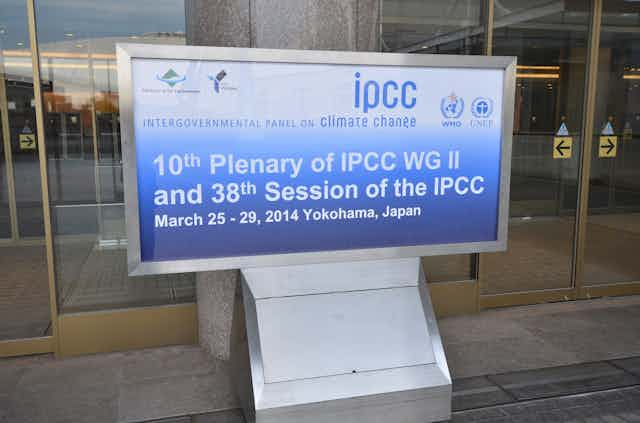Every day there seems to be more confusing (and sometimes downright misleading) news about climate change. Depending on what you read and whom you listen to, climate change is getting worse, or not happening; it will impact our society dramatically, or is good for plants; we need to act now, or its impacts are exaggerated.
If you want simple, straightforward answers based on the best science about the real effects of climate change, they can be found in the upcoming report on climate impacts from the Intergovernmental Panel on Climate Change (IPCC).
How is the IPCC organised?
This week in Yokohama, Japan, a group of scientists and representatives of more than 120 governments are meeting to approve the report Climate Change 2014: Impacts, Adaptation and Vulnerability. They will also agree on its Summary for Policymakers – an arduous process of negotiation and line-by-line approval. On Monday they will release it to the media and public.
This is the second part of the Assessment Report of the IPCC. It follows last September’s release of the first part, Climate Change 2013: The Physical Science Basis.
The IPCC was established in 1988 to undertake comprehensive assessments of the scientific basis of climate change and the impacts and future risks to different sectors and regions. It also assesses the options for adapting to these impacts, and opportunities to mitigate climate change.
The IPCC is the accepted global authority on climate change. A recent explainer on The Conversation has described the structure of the IPCC and how it works.
It has three “Working Groups”: one on Climate Change Science; one on Impacts, Adaptation and Vulnerability; and one that deals with Mitigation of Climate Change. They work together to prepare comprehensive Assessment Reports roughly once every six years. The IPCC Third Assessment Report was released in 2001 and the Fourth Assessment Report in 2007.
Now we are in the middle of the release of the various parts of the Fifth Assessment Report, one from each Working Group and finally the Synthesis Report, to be released later this year.
How are the reports written?
The IPCC assessments are written by hundreds of leading scientists who volunteer their time. They undertake comprehensive assessments of the scientific literature across a very wide range of topics relevant to climate change. The reports are required to present policy-relevant information, but it must be presented in a policy-neutral manner, so there are no recommendations in any IPCC assessment.
Each part of the report goes through three stages of drafting and review by experts and governments. All review comments and the responses from the authors on how they addressed the comments are made public. This review process is more open and comprehensive than for any other scientific publication or assessment, including the peer-reviewed science publications on which the reports are based.
The final stage, the approval of the Summary for Policymakers, is often misunderstood. The government representatives go through the final draft line by line, seeking to ensure that the text is scientifically accurate, that any uncertainties are carefully explained, and that the language is as clear as possible. The authors of the chapters ensure their scientific accuracy and can veto any text that they consider to be inaccurate. Every line is approved by consensus by the representatives of all the governments present. It takes a long time.
A very helpful explainer on how to read an IPCC report was published on The Conversation last September.
What is being discussed in Yokohama?
This week, the IPCC has been meeting to approve the second part of its Fifth Assessment Report – the volume that covers “Impacts, Adaptation and Vulnerability”. This assesses the impacts of climate change and vulnerabilities to these impacts, as well as options for how we can adapt to minimize the impacts.
It considers a wider range of sectors than previous reports, as well as more regions of the globe. This means that this Impacts Assessment has twice as many chapters and is nearly twice as long as the previous IPCC Working Group 2 report in 2007.
The different sectors include water resources, terrestrial, coastal and ocean systems, food production, urban and rural areas, human health and human security, as well as approaches to adaptation and multi-sector risks and vulnerabilities. The regions include each of the continents, plus the poles, small islands, and the oceans.
The IPCC has worked hard to include a broader and more representative group as authors. Working Group 2’s writing team consists of 310 scientists from 73 countries, divided into Coordinating Lead Authors, Lead Authors and Review Editors. Most have not previously been involved in any of these roles in the past decade. Some 40% of the writing team come from developing countries and economies in transition.
When the report comes out on Monday, make sure to read its Summary for Policymakers (as well as The Conversation’s IPCC coverage).
Of course, that isn’t the end of the story. The third part of the Fifth Assessment Report, Climate Change 2014: Mitigation of Climate Change will be released in Berlin on April 13.

